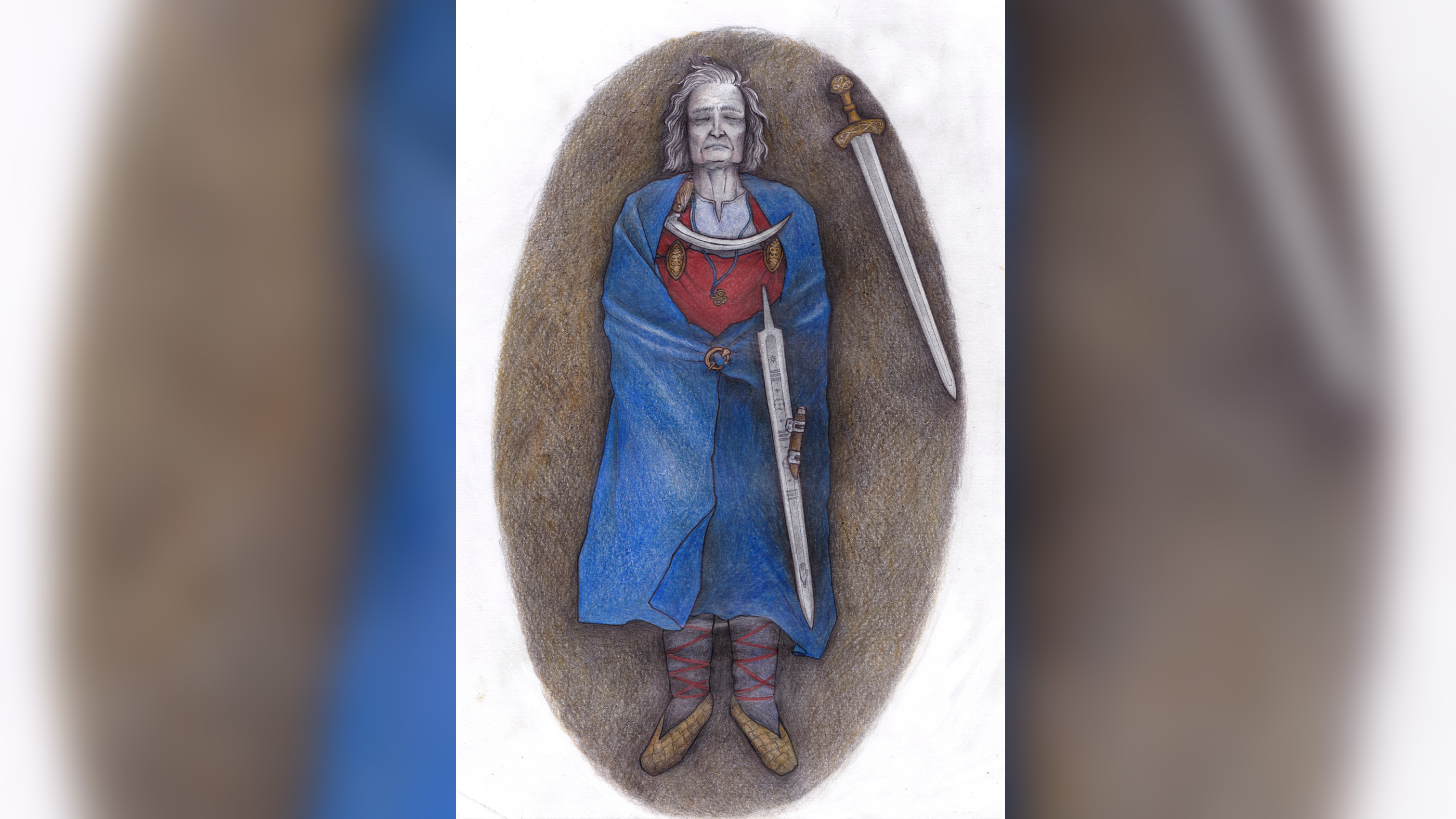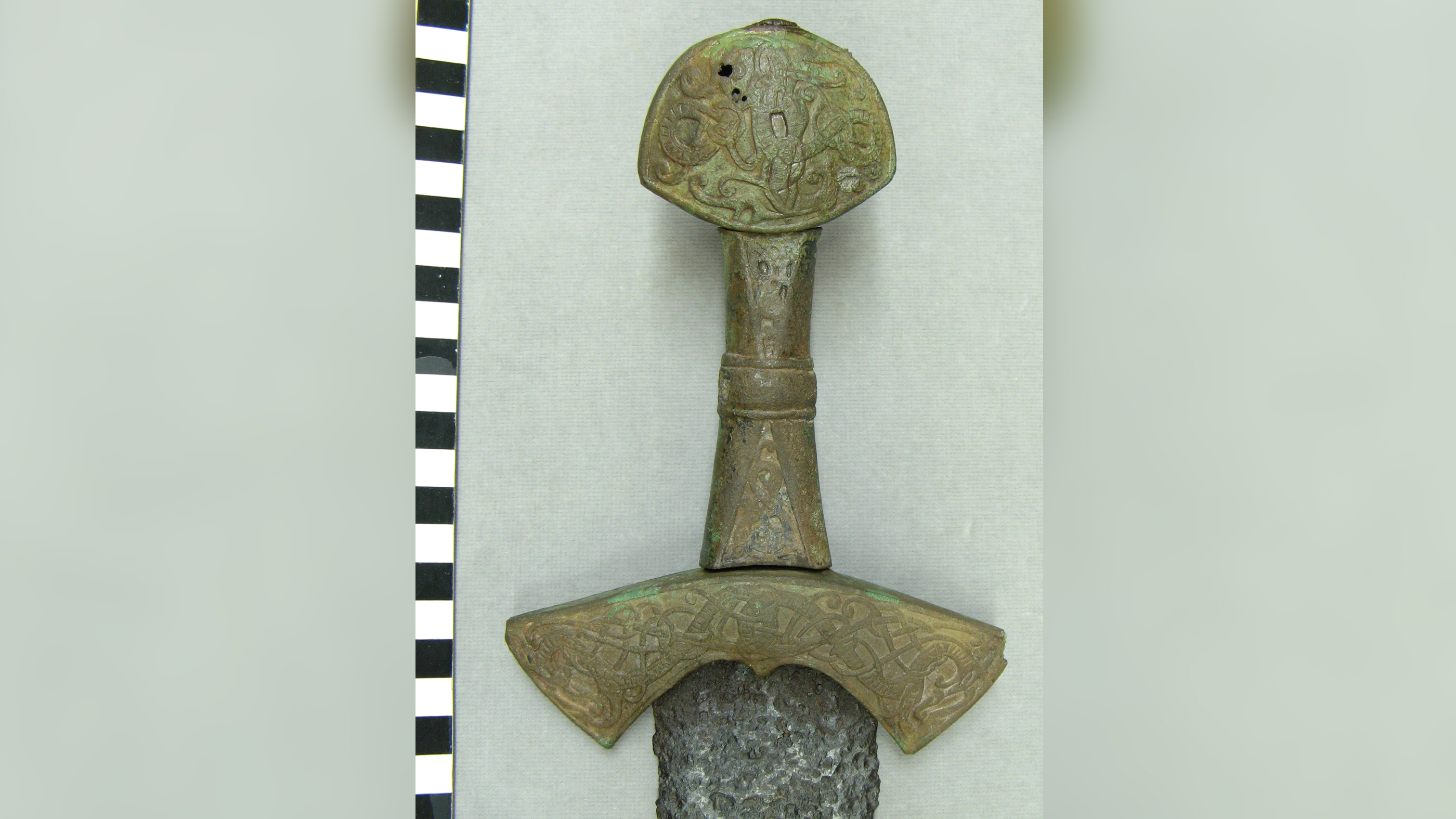'Female' warrior buried in medieval grave may be non-binary

A medieval grave in Finland that was thought to hold the body of a female warrior or ruler has revealed a surprise — the person buried there may be non-binary.
An archaeologist excavated the 900-year-old grave in 1968, finding inside the remains of an individual wearing oval brooches on top of woolen textiles — a style of dress that is "a typical feminine costume of the era," a team of researchers wrote in a paper published online July 15 in the European Journal of Archaeology. A sword was found on the left side of the individual, and another sword, likely deposited sometime after the person was buried, was buried above the burial.
Related: Photos: Viking warrior is actually a woman
"Since then, the grave has been interpreted as evidence of powerful women, even female warriors and leaders in early medieval Finland," the researchers wrote. However, new DNA tests have revealed that the person is anatomically male and had Klinefelter syndrome, a condition in which a male has an extra X chromosome. Each cell normally holds a pair of sex chromosomes — XX for female and XY for male — that determines a person's sex. A person with Klinefelter syndrome has cells with XXY chromosomes, according to the Mayo Clinic. This condition can cause breast enlargement, infertility and a small phallus. After finding this genetic surprise, the researchers said it's possible that the person may have identified as non-binary, they wrote in the study.

The fact that the person was buried with swords and jewelry suggests that people in their community accepted this identification and did not treat them as an outcast, the research team wrote.
"It has been suggested that, in the ultramasculine environment of early medieval Scandinavia, men with feminine social roles and men dressing in feminine clothes were disrespected and considered shameful," the researchers wrote, noting that the new finding casts doubt on this idea.
Because swords and jewelry cost a sizable amount of money, this person likely came from a wealthy and possibly influential family, the research team wrote.
Sign up for the Live Science daily newsletter now
Get the world’s most fascinating discoveries delivered straight to your inbox.
"The individual could have been a respected member of a community because of their physical and psychological differences from the other members of that community; but it is also possible that the individual was accepted as a non-binary person because they already had a distinctive or secured position in the community for other reasons; for example, by belonging to a relatively wealthy and well-connected family," the researchers wrote.
Another possibility is that the person was a shaman or magic user. Surviving texts from the time suggest that some shamans and magic users were men who wore women's clothes because the Norse god Odin "was associated with feminine magic," the research team wrote.
The researchers noted, however, that the DNA sample was small and to analyze it they were only able to read a relatively small number of genetic sequences. This meant that the researchers had to develop a system of mathematical modeling to determine that the person was anatomically a male with Klinefelter syndrome, said lead study author Ulla Moilanen, a doctoral student in archaeology at the University of Turku in Finland. The modelling system the researchers developed had never been used before they said in the paper.
The grave is located at the site of Suontaka in southern Finland. At the time of the burial, the area around Suontaka had a hillfort, sacrificial stones, cemeteries and settlements surrounded with fields, the researchers wrote in the paper.
Convincing discovery
Scholars not affiliated with the research were generally supportive about the Suontaka findings.
"The team had a minuscule amount of data to work with but convincingly show that the individual likely had an XXY karyotype," said Pete Heintzman, a professor at the Arctic University of Norway, who is an expert in ancient DNA analysis. (A person's karyotype describes the number and appearance of chromosomes in their cells.)
"Moilanen and colleagues showed the [burial] was that of an individual who had Klinefelter's syndrome with two X chromosomes and one Y chromosome, and was genetically male" said Nic Rawlence who is director of the Otago Palaeogenetics Laboratory at the University of Otago in New Zealand.
Another DNA researcher was a bit more cautious. "The [DNA] results are not great, as the authors note, but the possible interpretation that the individual had Klinefelter's is reasonably well supported based on the patchy data" said Lisa Matisoo-Smith, who is head of the Department of Anatomy at the University of Otago in New Zealand.
Archaeologists and historians also supported the team's findings. "I find it exciting to see new work engaging with complex questions of gender, bodies and identities," said Marianne Moen, a postdoctoral researcher at the University of Oslo's Museum of Cultural History. "It's great to see the expansion of knowledge available to us through scientific analysis, especially when it is placed in context with a wider societally relevant debate, as this article does."
"I think it is a well researched study of an interesting burial, which demonstrates that early medieval societies had very nuanced approaches to and understandings of gender identities," said Leszek Gardeła, a researcher at the National Museum of Denmark. Gardeła said that it is interesting that there was a sword buried on the left side of the person's body, noting that there are a few examples in Scandinavia where women had a sword buried on the left side of their body despite the fact that swords were usually laid on a person's right side. This unusual placement of the sword seems to imply "some kind of 'difference' of the deceased." Gardeła said.
Originally published on Live Science.

Owen Jarus is a regular contributor to Live Science who writes about archaeology and humans' past. He has also written for The Independent (UK), The Canadian Press (CP) and The Associated Press (AP), among others. Owen has a bachelor of arts degree from the University of Toronto and a journalism degree from Ryerson University.










